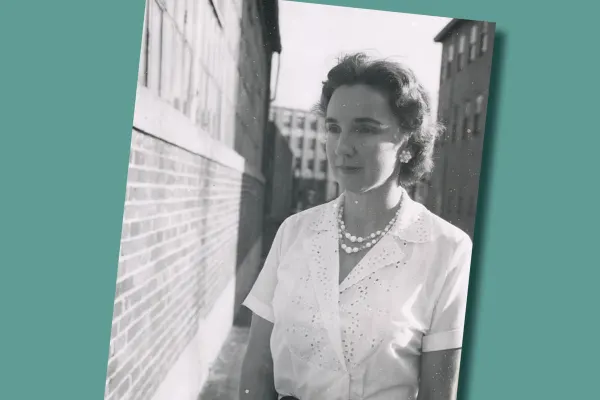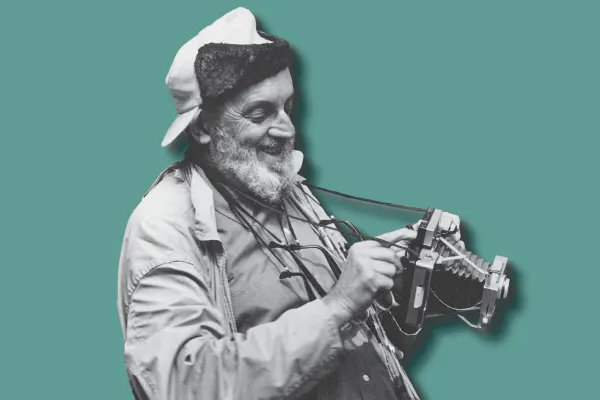Clarence Kennedy and the Art of Photography
Photo: Clarence Kennedy teaching, ca. 1950s. Kennedy Family papers, Smith College Archives, CA-MS-01101, Smith College Special Collections, Northampton, Massachusetts.
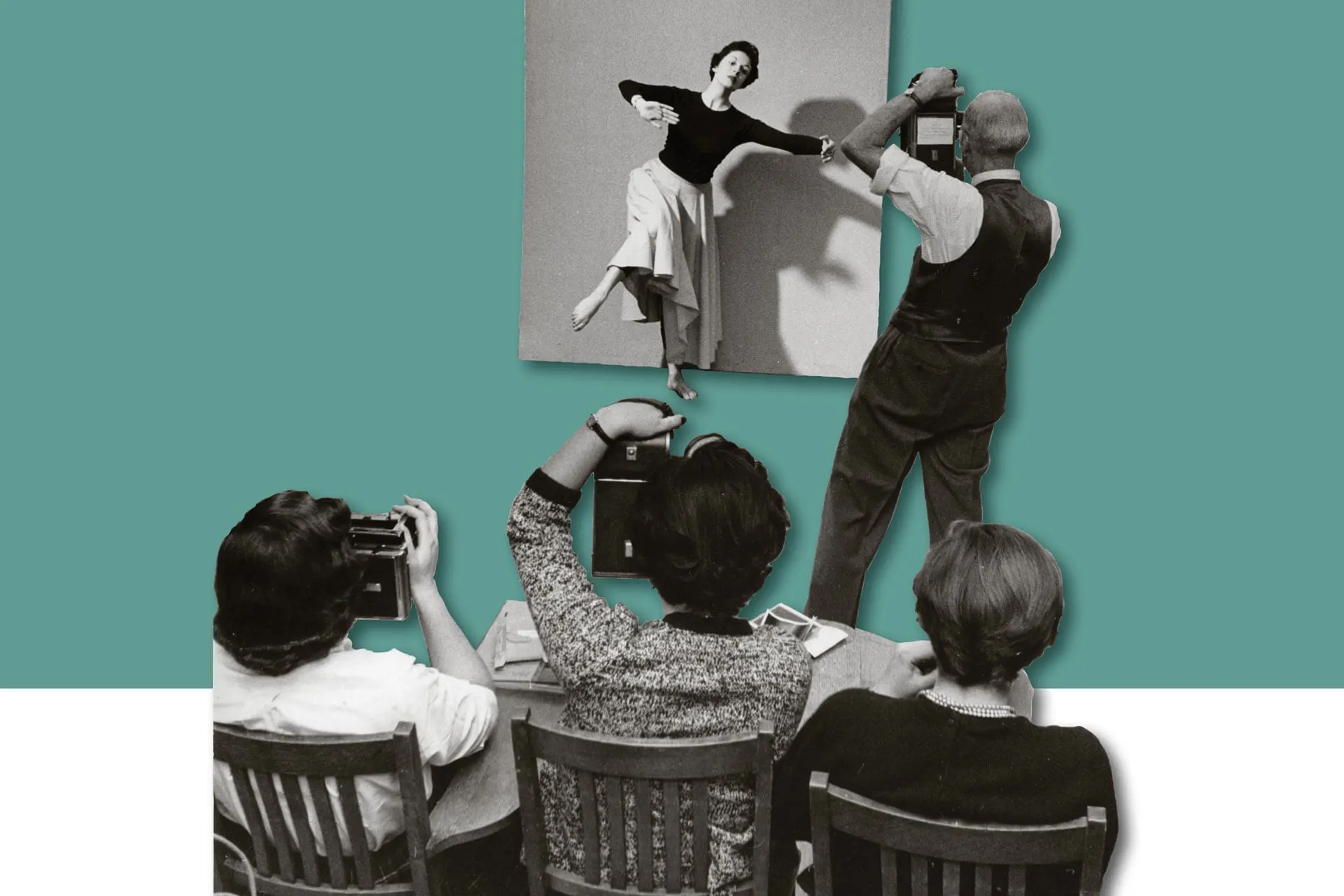
Meroë Morse’s relationship with Clarence Kennedy, her former art history professor, continued during her years at Polaroid, contributing to the advancement of instant photography and the ongoing recruitment of Smith art history majors by the company. In 1949, Kennedy introduced a course at Smith on photographing works of art, and in the early 1950s he incorporated instant photography into his class “The Art of Photography.” The course focused on “a study of the effect of light and perspective on form. Lectures, demonstrations, and practice based on the use of one-minute positive cameras which, with film, will be available for student use.”(1) Morse helped with the practical and theoretical aspects of the class, providing Kennedy with Polaroid cameras and film. Selected photographs taken by students in the class were given or lent to the SX-70 lab for review.(2) Morse also arranged for Kennedy to teach techniques in instant photography to Polaroid employees.(3)
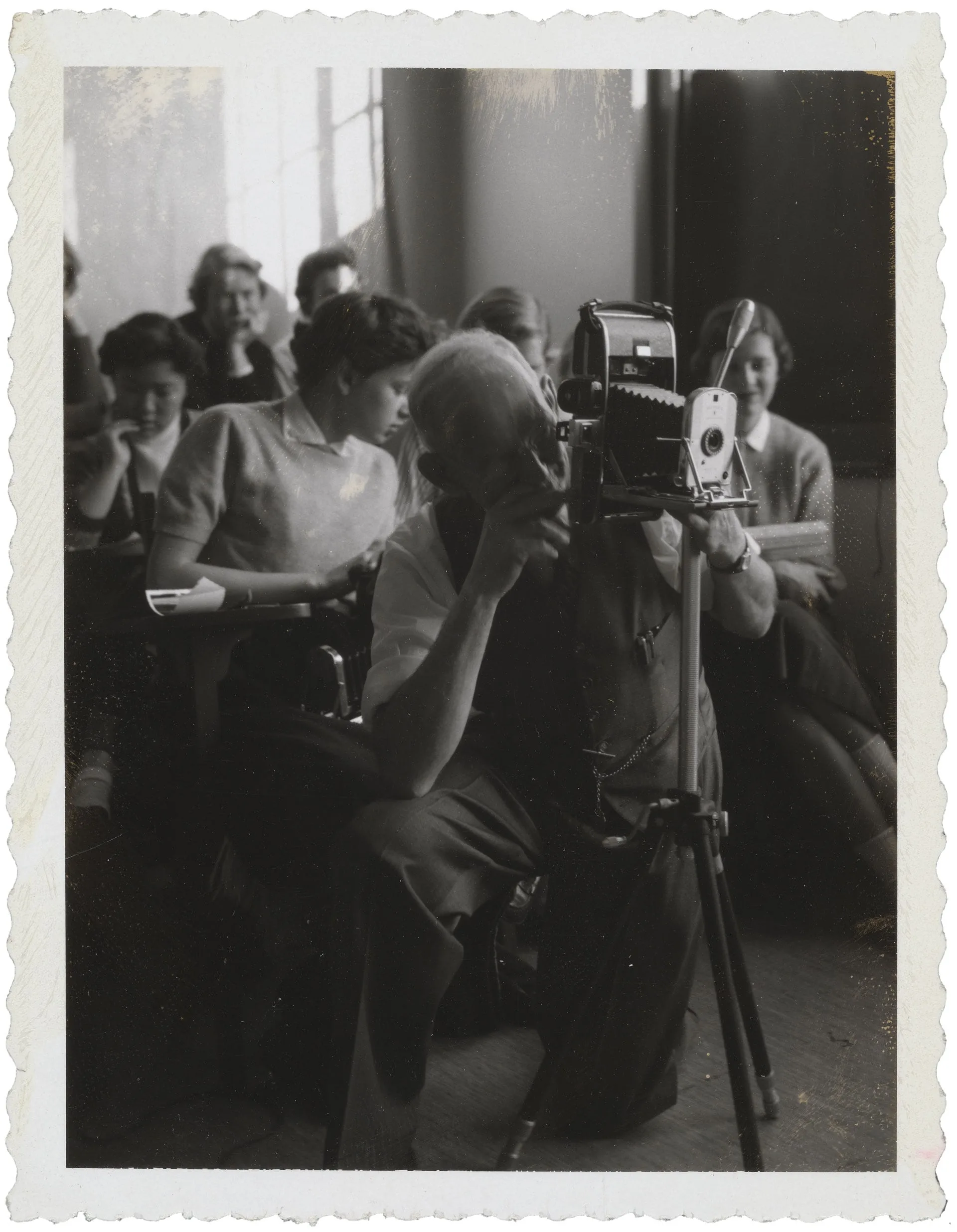
Clarence Kennedy in the classroom, 1954.
Smith graduates, particularly those who had completed “The Art of Photography” class, had the advantage of previous experience with Polaroid cameras and films, and Morse offered many of them employment at Polaroid, just as the opportunity had once been extended to her. “Few corporations were hiring female scientists,” Christopher Bonanos writes in Instant: The Story of Polaroid, “and even fewer were looking for them in Smith’s art-history department.”(4) Art history majors from Smith at Polaroid included Margaretta Kuhlthau, who became a noted still life and portrait photographer under her married name Margaretta Mitchell. While working in Morse’s lab, Kuhlthau also assisted Kennedy in his classes using Polaroid cameras and film.
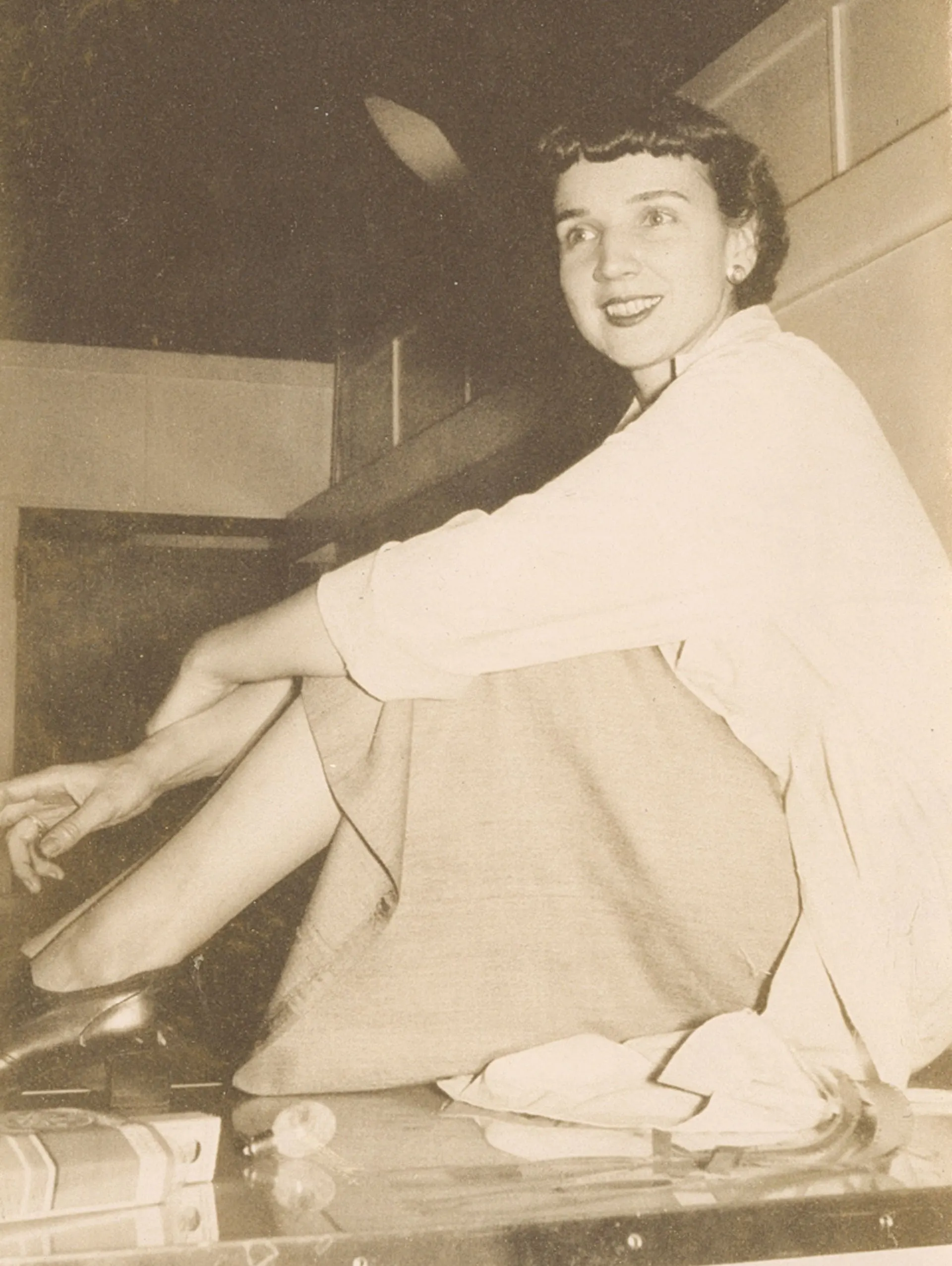
Meroë Morse, test photograph, 1952. Polaroid Corporation Records Related to Meroë Morse, b. VII.29, f. 5.
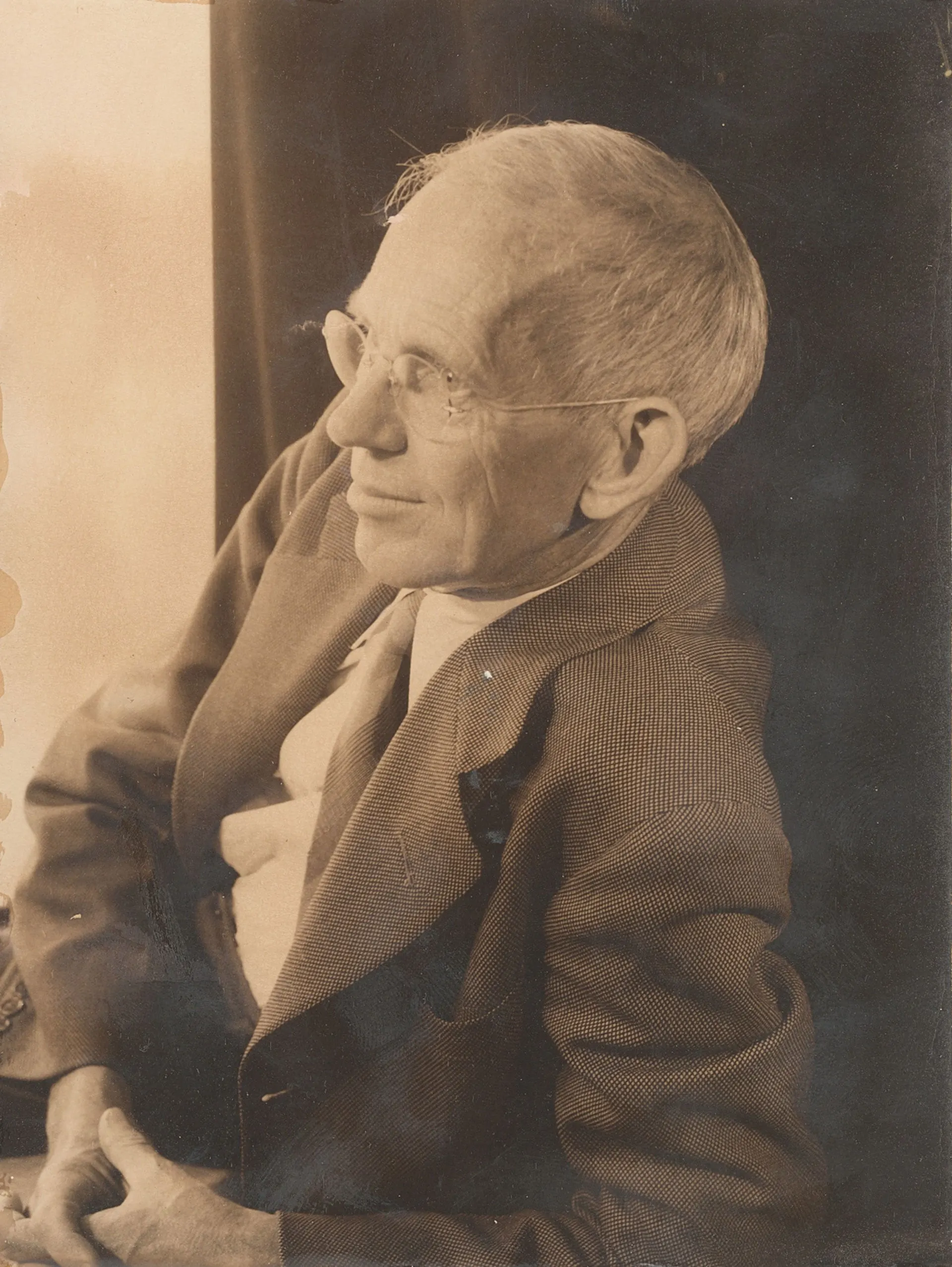
Clarence Kennedy, test photograph by Meroë Morse, June 13, 1946. Polaroid Corporation Records Related to Meroë Morse, b. VII.3, Folder 8.
In a letter to Kuhlthau, Lucreita Weed, another student of Kennedy’s, enthused, “I have truely [sic] gained something which started with Mr. Kennedy and became quite clear. . . . that is the difference between LOOKING AND SEEING. . . . The amazingly superior quality of the [P]olaroid film has made me far more sensitive to tone, contrast, texture and subject matter. . . . The Polaroid is an artist camera.”(5) Morse hired Weed to work in the company’s black-and-white photography lab, and she went on to head the group for transparency, slide, and movie film.(6) Crystal Woodward, Eudoxia Muller Woodward’s daughter, recalls speaking frequently with Land of his interest “in hiring artists and majors in art history to work on projects of photographic research, for he appreciated [that they] have cognitive capacities, other than what scientists may have [and] they bring these capacities, including imagination and visualization, to scientific work.”(7) A number of women who worked in Polaroid’s photographic laboratories with Morse, including Eudoxia Muller Woodward, Ann Robb Bell, Margaretta Kuhlthau Mitchell, and Laurie Seamans, went on to pursue careers as artists or photographers.
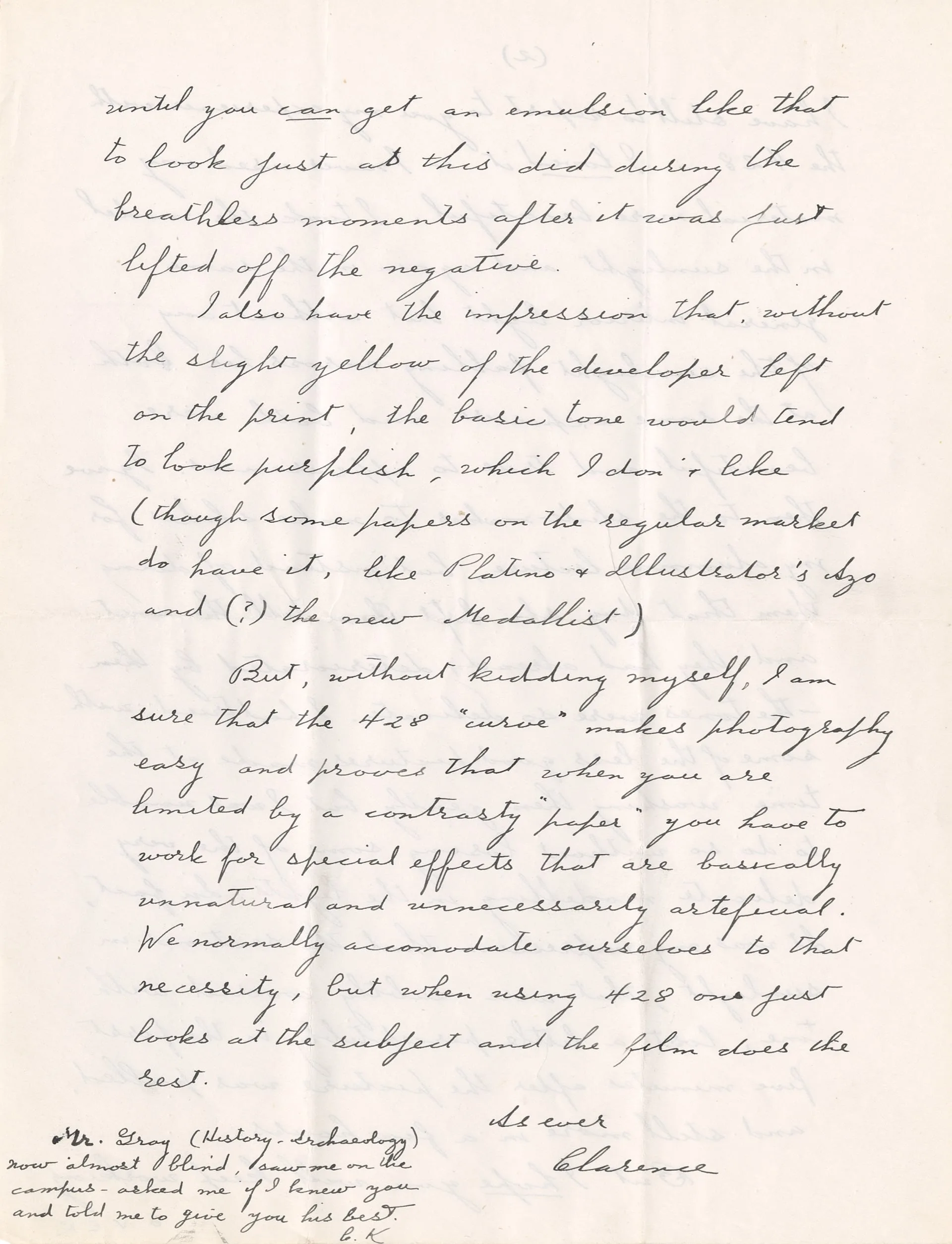
Letter to Meroë Morse from Clarence Kennedy, June 30, 1952. Polaroid Corporation Records Related to Meroë Morse, b. VII.3, f. 6.

Letter to Clarence Kennedy from Meroë Morse, August 7, 1953. Polaroid Corporation Records Related to Meroë Morse, b. VII.3, f. 5.

Letter to Meroë Morse from Clarence Kennedy, June 30, 1952. Polaroid Corporation Records Related to Meroë Morse, b. VII.3, f. 6.

Letter to Clarence Kennedy from Meroë Morse, August 7, 1953. Polaroid Corporation Records Related to Meroë Morse, b. VII.3, f. 5.

Letter to Meroë Morse from Clarence Kennedy, June 30, 1952. Polaroid Corporation Records Related to Meroë Morse, b. VII.3, f. 6.

Letter to Meroë Morse from Clarence Kennedy, June 30, 1952. Polaroid Corporation Records Related to Meroë Morse, b. VII.3, f. 6.

Letter to Meroë Morse from Clarence Kennedy, June 30, 1952. Polaroid Corporation Records Related to Meroë Morse, b. VII.3, f. 6.

Letter to Meroë Morse from Clarence Kennedy, June 30, 1952. Polaroid Corporation Records Related to Meroë Morse, b. VII.3, f. 6.

Letter to Clarence Kennedy from Meroë Morse, August 7, 1953. Polaroid Corporation Records Related to Meroë Morse, b. VII.3, f. 5.
As a long-time consultant to the company, Kennedy, a self-described “scholar-photographer,” continued to offer insights into the performance of Polaroid products gained from his research and teaching. “I look forward with the greatest anticipation to the beginning of your class again, as we so much enjoy participating and sharing your experiences as you teach the fundamentals of photography,” Morse wrote to Kennedy.(8) The correspondence between them reveals their mutual affection and stimulating conversations about the technical and artistic aspects of instant photography. Peter Buse, author of The Camera Does the Rest: How Polaroid Changed Photography, writes that “Kennedy’s influence on Polaroid company culture and ideals cannot be underestimated. His close friendship with Land implanted [both] artistic ambitions and the artistically trained at Polaroid from very early on.”(9)
Smith College Bulletin, The Catalogue Number 1952–1953, Smith College with an Announcement of Courses for 1953–1954, Series 47, No. 2, 53 (Northampton, Mass.: Smith College). https://archive.org/details/smithcat5253smit/page/n7/mode/2up.
Miss Kulthau to Mr. Calderwood, Memorandum, March 10, 1958, “Class at Smith College.” Polaroid Corporation Records Related to Meroë Morse, Box VII.02. Folder, 7.
Meroë Morse to Edwin H. Land, July 26, 1957, 5. Polaroid Corporation Records Related to Meroë Morse, Box VII.03, Folder 13.
Christopher Bonanos, Instant: The Story of Polaroid (New York: Princeton Architectural Press, 2012), 14.
Lucretia Jarvis Weed to M. Kuhltahu, Letter (n.d.), 6, 7. Polaroid Corporation Records Related to Meroë Morse, Box VII.02, Folder 1.
Correspondence over the years between Morse and those who worked in her lab reveals the affectionate bonds Polaroid employees maintained with Morse.
Crystal Woodward, personal communication with Melissa Banta, June 14, 2024.
Meroë Morse to Clarence Kennedy, August 7, 1953. Polaroid Corporation Records Related to Meroë Morse, Box VII.03, Folder 5.
Buse, The Camera Does the Rest, 164.
